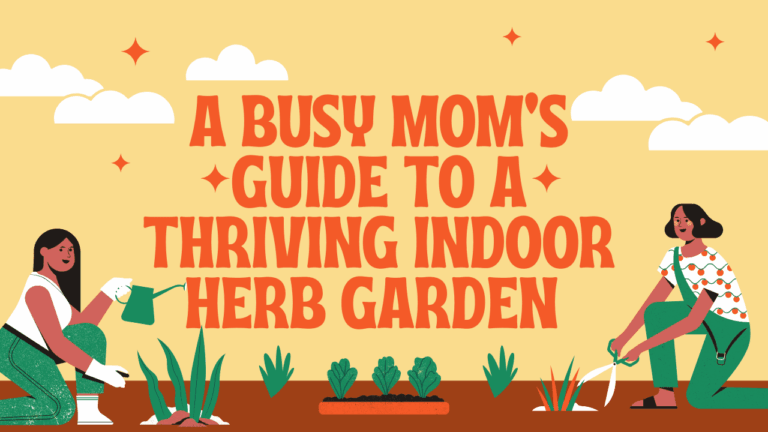Juggling work, school runs, and a never-ending to-do list can feel like a full-time job in itself. When you finally get a moment to cook a family meal, the last thing you want is to realize the recipe calls for fresh basil you don’t have. Running to the store is an option, but what if you could just snip what you need from a tiny, mess-free garden on your kitchen counter? It sounds like a dream, but it’s completely achievable, even for those of us who weren’t born with a green thumb.
The secret is a method called hydroponics. And before you click away thinking it sounds too complicated or scientific, let’s break down why it might just be the perfect solution for your busy life.
What is Hydroponics (and Why Should You Care)?
At its core, hydroponics is simply a way of growing plants without soil. Instead of digging in the dirt, plants get all the nutrients they need from a water-based solution. Think of it as giving your plants a nutrient-rich smoothie delivered directly to their roots. For a busy mom, this translates into three huge wins: less mess, less work, and faster results. There’s no soil to spill, no bags of potting mix to store, and fewer pests to worry about. It’s a clean, contained, and incredibly efficient way to grow.
This modern approach to gardening is becoming more popular as people look for sustainable ways to grow food at home. In fact, many find that these space-saving home gardening solutions are not only cleaner but also more efficient, with some systems using less water than traditional soil pots. It’s a set-it-and-forget-it system that fits perfectly into a hectic schedule.
Your Simple Hydroponics Setup
Diving into hydroponics doesn’t require a science degree or a huge budget. You can start small with a simple countertop kit, many of which are designed to be as user-friendly as a coffee maker.
Here’s what a basic beginner setup typically includes:
- A Container: This holds the water and nutrient solution. Many starter kits look like sleek, modern planters that will blend right into your kitchen decor.
- A Light Source: Since your indoor garden won’t get direct sunlight all day, most kits come with a built-in, full-spectrum LED grow light, check out gardens to see other features. These are on an automatic timer, so you don’t even have to remember to turn them on or off.
- Nutrients: This is the plant “food.” It usually comes in liquid form that you add to the water every couple of weeks. It’s as simple as measuring a capful and stirring it in.
- Growing Medium: Instead of soil, the seeds are placed in small pods made of something like coconut coir or rockwool. These pods hold the plant steady and allow the roots to grow down into the water.
The process is straightforward: you pop the seed pods into the container, add water and nutrients, turn on the light, and watch your herbs grow.
The Best Herbs for Your Kitchen Counter Garden
Now for the fun part: deciding what to grow. When you’re just starting, it’s best to choose herbs that are both easy to grow and useful in a wide variety of recipes. This ensures you get a quick win and can immediately enjoy the fruits (or leaves) of your labor.
Consider starting with these kitchen powerhouses:
- Basil: Perfect for pasta sauces, homemade pesto, or slicing over a fresh tomato and mozzarella salad.
- Mint: A must-have for mojitos, iced tea, or a refreshing garnish for desserts. It grows incredibly fast in a hydroponic system.
- Parsley: A versatile herb that can brighten up almost any dish, from soups to roasted vegetables.
- Chives: Great for sprinkling over eggs, baked potatoes, or mixing into dips.
- Cilantro: Essential for tacos, salsa, and many Asian-inspired dishes.
Choosing a few of these will give you a fantastic base for adding fresh, vibrant flavor to your everyday cooking. For inspiration on how to use them, a quick search for recipes using fresh herbs can provide endless ideas.
Fitting It Into Your Hectic Life
The real beauty of a hydroponic herb garden is how little it asks of you. Unlike a traditional garden that requires regular weeding, watering, and worrying about weather, a hydroponic system is largely self-sufficient. Your main tasks will be refilling the water and adding nutrients every 2-3 weeks, a task that takes less than five minutes.
The system handles the rest. The automated light provides the “sunshine,” and the roots have constant access to everything they need. This means you can go on a weekend trip without hiring a plant-sitter. It’s a small addition to your home that delivers a huge return in flavor, convenience, and the simple joy of watching something grow.
Frequently Asked Questions
Is it expensive to get started with a hydroponic herb garden?
While large, advanced systems can be pricey, countertop starter kits are very affordable, often costing less than a single fancy kitchen gadget.
Do hydroponically grown herbs taste different from soil-grown ones?
Not at all. Because the plants receive a perfectly balanced diet of nutrients, many people find that hydroponic herbs have a more vibrant and consistent flavor.
How much time does it really take to manage per week?
Honestly, you’ll likely spend less than five minutes a week on your garden. The main task is checking the water level and adding nutrients every couple of weeks.
What if I have a “black thumb” and always kill plants?
Hydroponic systems are almost foolproof, making them perfect for beginners. The system automates the most difficult parts of gardening (watering and lighting), removing the guesswork that often leads to plant failure.

